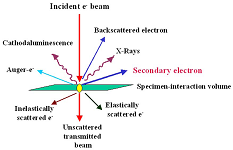
Asia Pacific Academy of Science Pte. Ltd. (APACSCI) specializes in international journal publishing. APACSCI adopts the open access publishing model and provides an important communication bridge for academic groups whose interest fields include engineering, technology, medicine, computer, mathematics, agriculture and forestry, and environment.

Analytical chemistry is widely applied in forensic toxicology. This issue outlines key methods and techniques for detecting and quantifying toxins, drugs, and other evidence. By leveraging analytical chemistry principles, forensic experts can accurately identify and analyze evidence from crime scenes, aiding investigations and legal processes.
Issue release: 31 December 2021
The career of Chemical Engineering presents among the areas studied several analytical techniques in common within the laboratory field with the field of criminalistics, these techniques are used for the detection of foreign components within samples of biological and non-biological origin that alter the behavior of an individual or end with the death of the same, the results are analyzed by comparison with established patterns that allow to give a reliable interpretation to be presented to a judge. The objective of this study is to collect information to determine the areas within the criminalistic and forensic field where a chemical engineer can be of support, taking advantage of his knowledge in the different analytical techniques and helping in the interpretation of the results of these, thus allowing to contribute to the legal procedures that are carried out in the cases presented before the law.
Issue release: 31 December 2021
Ambient ionization mass spectrometry (AIMS) is a technique that allows for the analysis of target analytes in samples at atmospheric pressure with minimal or no sample preparation. Its advantages, including simplicity, speed, non-destructiveness, and broad applicability, make it highly useful in forensic toxicological analysis. This article provides an overview of the ambient ionization (AI) technique, categorizes samples into two types—in vivo and in vitro test materials—and summarizes AIMS applications in poison analysis across various sample types. It also explores future directions for AIMS in forensic toxicology.
1.jpg)
Prof. Sivanesan Subramanian
Anna University, India


 Open Access
Open Access



.jpg)
